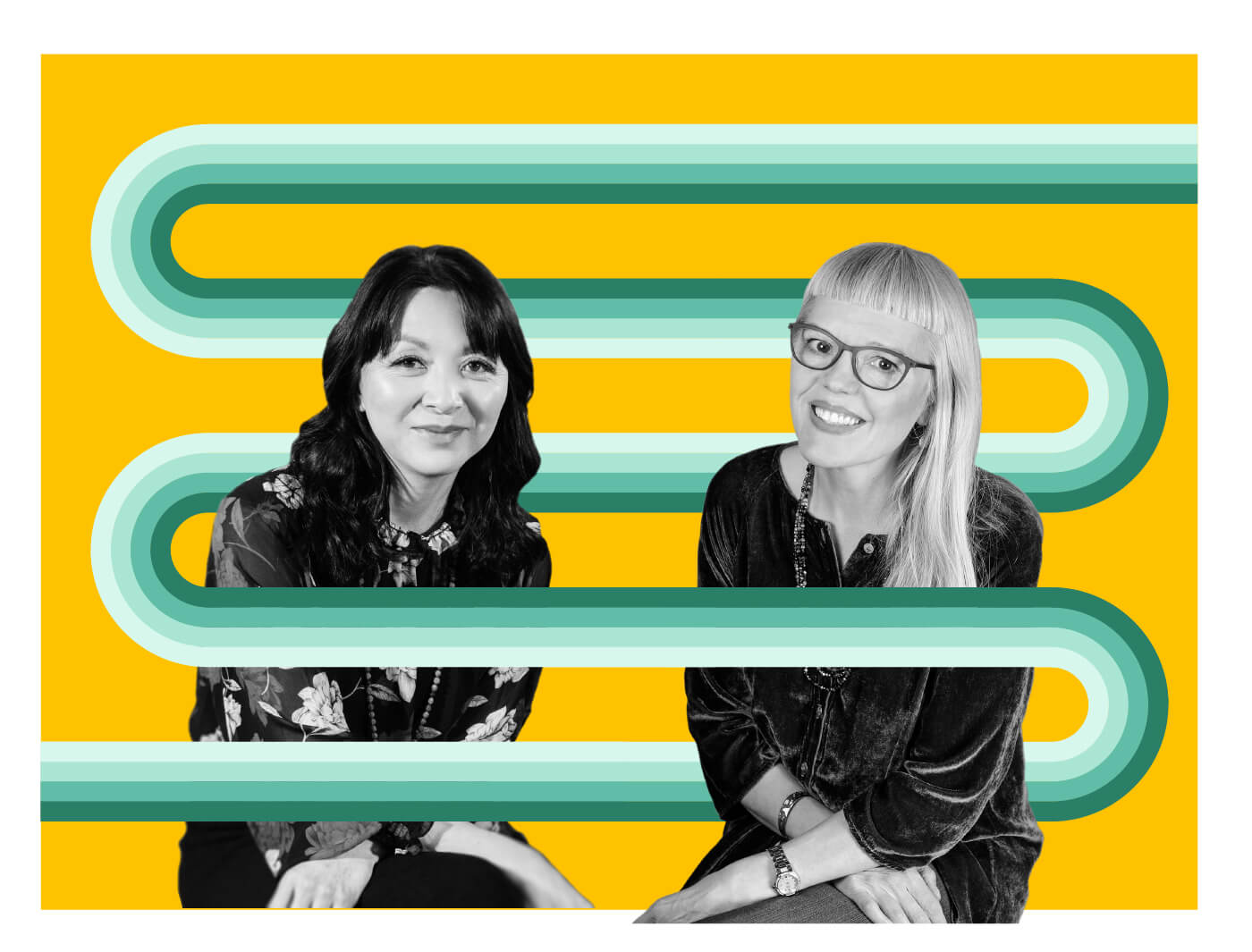Suzanne Siemens & Madeleine Shaw
Co-founders, Aisle
We hadn’t heard the term “radiant growth” before Madeleine Shaw and Suzanne Siemens shared it with us — which feels apt, since these two humans embody both radiance and a commitment to growth.
They joined forces in 2000 as co-founders of Aisle, a groundbreaking manufacturer of sustainable, ethically produced menstrual care products. Aisle (short for ‘period aisle’) is the rebrand of Lunapads, one of the first companies worldwide to champion reusable menstrual products, now a thriving part of the $20 Billion ‘Femtech’ sector.
Madeleine’s background in fashion and textiles complemented Suzanne’s financial acumen (she’s an experienced CPA who left the corporate world for entrepreneurship) — but their business partnership stemmed from much more than well-matched skill sets. It was their shared commitment to leveraging business as a vehicle for social and environmental good that convinced them to join forces.
Together, they have grown Aisle into a company that creates positive social change while being financially sustainable, and empowering people who menstruate to feel more at home in their bodies. They champion issues like period equity, transgender inclusion, and social justice both within their business and beyond.
Beyond their insights into business that supports social and environmental well-being, Madeleine and Suzanne are two of our go-to geek-out buddies when it comes to exploring the great Pacific Northwest outdoors; creating work spaces that are more inclusive of parents, children, and caregivers; and mutual mentorship with young people.
🤓 I geek out about…
Suzanne Siemens: The intersection of business and impact and using B Corp principles to change the face of capitalism.
Madeleine Shaw: Natural patterns of growth and evolution, especially cycles. Seeds, plants, trees. Lunar, seasonal, tidal, menstrual, sleep. Considering how we can apply their lessons to businesses and other types of organizations.
🎒 I collect…
SS: Tiny shells on the beaches of the Pacific West Coast.
MS: Fragments of pacific oyster shells that I call yois. The name is a play on ‘oyster’, inspired by the fact that yois are smaller, pared down and adorable. As another tidbit of geekery, pacific oysters are protandric hermaphrodites, meaning that they initially mature as male, however migrate genders to reproduce. I have collected and given away thousands of them, and maintain a collection of a couple hundred at any given time. Weathered for decades by the endless rolling surf on the stony shores of the Salish Sea, to me they are metaphors for life and the aging process. While they were originally parts of something larger, the wearing process softens their edges, revealing countless luminous layers. Rather than seeing them as broken, I understand that they are in a process of becoming revealed, hence their luminosity. They populate my bags, coat pockets, garden and random places in my home as talismen, reminders of their timeless world that ceaselessly churns on, alongside and yet so separately from my urban existence.
💬 My friends ask my advice about…
MS: Things that have an interesting way of not turning out to be about the issue that they thought that they were bringing to me in the first place.
SS: How to find, build and maintain a successful partnership with a co-founder.
🧰 How my weird obsessions show up in my work…
MS: Refusing to be limited to binary or linear thought patterns. Questioning assumptions. Factoring in emotion, intuition and being open to what wants to happen, as opposed to pushing toward a set of fixed goals.
🌱 What form(s) of growth is/are most important for your company?
MS: I think a lot about what I call lateral or radiant growth, or what post-growth economist Kate Raworth calls Thriving. This stands in contrast to the rapid startup > ’up and to the right’/hockey stick growth > exit model of scale that currently defines it, at least in a business sense.
Raworth points out that literally nothing in the natural world (ok, other than diseases, most notably cancer) embodies this growth pattern. The Thriving model mimics the natural growth patterns of trees, humans and animals, where once they are mature, there is a long period of relatively ‘flat’ (yet healthy) growth, followed by a reproductive stage, where the organism/organization spawns new entities.
I think of Thriving as Radiance, because — assuming that the organization has positive impact as its objective — it radiates out in multiple directions, in ways that we are only just beginning to value and measure.
🌤️ A thing that makes me hopeful about the future of business:
SS: Folks involved in the Zebra movement, B Corp movement, etc.
MS: Zebras Unite, SheEO, B Corp, House of Beautiful Business and other feminist/regenerative/post-growth/emergent etc models and movements. Initiatives like this one.
💭 I wish more companies would…
SS: Be more transparent, anti-racist and act on climate.
MS: Incorporate social and environmental impact into their purpose and KPIs. Imagine if companies like Apple, Nike or Amazon undertook B Corp certification?
💛 How can companies and industries take better care of people?
SS: By acknowledging and seeing them as people with a unique social history and help them find ways to deliver their true gifts.
❓ A question I love:
MS: What are the assumptions? What’s a different way of looking at this? What wants to happen?
🚶 I would walk/drive/travel 500 miles to…
SS: See lush parts of the earth, untouched by humans.
MS: Or considerably further, to be with my daughter.
You can connect with Suzanne on Twitter and Madeleine on LinkedIn.
